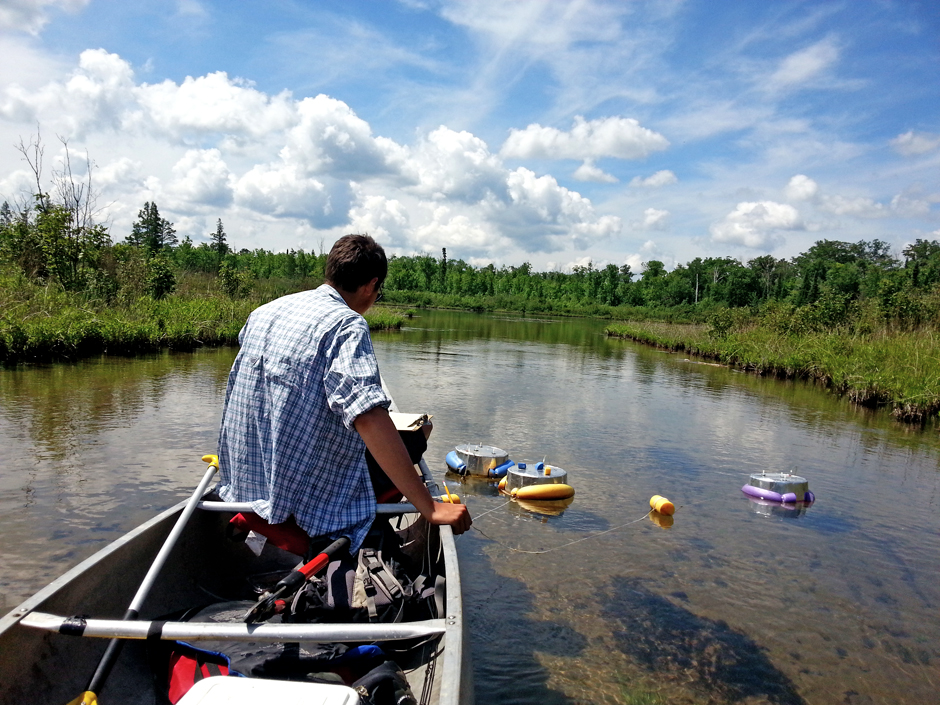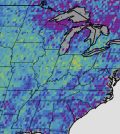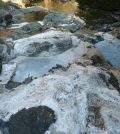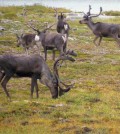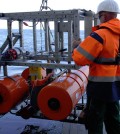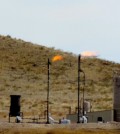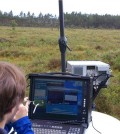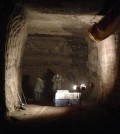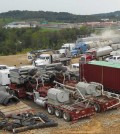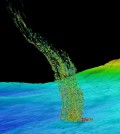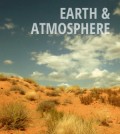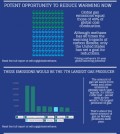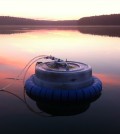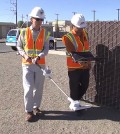Posts for tag "methane"
In the Right Place All the Time: Greenhouse Gas Research and NTL-LTER
Greenhouse gas dynamics research in lakes and streams by NTL-LTER yields some surprising results, especially regarding methane.
- Posted October 12, 2021
No Evidence of Natural Gas From Fracking In Ohio Drinking Water
Time-series research reveals no evidence of natural gas contamination from fracking in Ohio drinking water wells.
- Posted August 13, 2018
Four Corners Methane Hotspot Imaged For First Time
NASA-led scientists use airborne spectrometers and other gear to image the Four Corners methane hotspot in high resolution.
- Posted September 1, 2016
Methane-Producing Microbes Discovered In California Freshwater Streams
For the first time, researchers from Memorial University of Newfoundland have found methane-producing microbes in a set of freshwater springs called The Cedars in Sonoma County, California. The springs are some of the few examples of serpentinization...
- Posted June 6, 2016
More Snow May Increase Alaskan Tundra Permafrost Degradation
An increase in snowfall is likely to lead to more Alaskan tundra permafrost degradation and changes in methane and CO2 production and absorption.
- Posted March 22, 2016
Ocean Methane Seeps Tracked With Acoustic Recorders
An effort led by Scripps Institution of Oceanography scientists relies on acoustic recording technology to better understand methane seeps in the ocean.
- Posted March 21, 2016
Los Angeles Gas Well Blowout Was Largest Methane Leak In U.S. History
The large gas well blowout that began near Los Angeles in late 2015 and continued through February of the following year released more than 100,000 tons of methane into the atmosphere, according to a release from the...
- Posted March 7, 2016
U.S. Methane Emissions Up 30 Percent From 2002 To 2014
Researchers at Harvard University, using satellite images and observations from Earth’s surface, have found that methane emissions in the United States have increased from 2002 to 2014. During that period, scientists say that the emissions went up...
- Posted February 25, 2016
Advanced Camera Can Monitor Methane In Air
A new camera developed jointly by Linköping and Stockholm Universities is capable of measuring and filming methane in the air, according to a release from Linköping University. The camera is expected to aid in tracking greenhouse gas...
- Posted December 7, 2015
Permafrost Carbon Thaws, Releases Quickly Into Environment
U.S. Geological Survey researchers find 30,000-year-old permafrost releases carbon quickly following thaw.
- Posted November 16, 2015
Australian Scientists Study Methane Emissions From Kangaroos
Yes, kangaroos do fart, a new study from the University of Wollongong reveals, according to LiveScience. Since the 1970s, a popular misconception was that kangaroos don’t pass gas, or that the gas they passed had low methane...
- Posted November 16, 2015
Study Looks At Probability Of Methane Leakage From Hydraulic Fracturing
University of Vermont scientists complete the first quantitative study of methane leakage from existing hydraulic fracturing sites to abandoned wells.
- Posted November 9, 2015
Warmer Ocean Temperatures Contribute To Methane Plumes Off Washington Coast
U. Washington researchers find methane is being released in areas off the state’s coast due to warmer waters about 500 meters below the Pacific’s surface.
- Posted October 21, 2015
Sampler Malfunctions May Contribute To Inaccurate Industrial Methane Leak Estimates
A type of flow sampler developed to monitor methane leaks from industrial sources may inadequately measure the gas, according to the New York Times. A researcher from the University of Texas made the find during a larger...
- Posted August 10, 2015
Report cites methane leak prevention as cheap method to fight climate change
A recent Environmental Defense Fund report suggests cutting methane leaks is a simple and cost-effective way to fight climate change, according to the New York Times. Rhodium Group, the organization that conducted the study, found that nearly...
- Posted April 30, 2015
Ultraportable greenhouse gas detectors enable new research into lake methane emissions
Enabled by ultraportable greenhouse gas detectors, new research draws attention to critical role of aquatic systems in atmospheric methane exchange
- Posted February 6, 2015
NASA developing drones to track methane
Originally developed to measure methane levels on planets far far away, sensors built by NASA’s Jet Propulsion Lab are helping to measure quantities of the gas right here on Earth, according to Grist. As methane is the...
- Posted February 3, 2015
Warming Pacific releases methane equivalent to Deepwater Horizon spill each year
A temperature study off the Washington coast revealed warming waters are causing methane to seep from the seafloor in massive quantities
- Posted December 17, 2014


